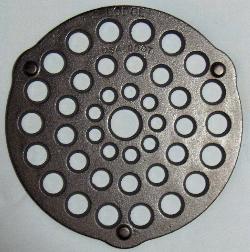Many of the recipes I’ve made have several things in common, they taste great, but they aren’t necessarily good for you. The next recipe, fatted potatoes, is a breakfast recipe that is prepared the night before. Traditionally, the recipe called for the potatoes to be poached in lard before cooking, but I like using the left over potatoes in this manner. The recipe comes in two parts – the dinner the night before (pot roast) and the morning after (fatted potatoes).
Night Before Ingredients:
3 Lb chuck roast
2 TB olive oil
4 lb red potatoes, washed and cut into quarters
1 large leek, diced
3 large carrots, diced
1 sprig of rosemary
4 cloves of garlic minced
sea salt and pepper to taste
Like making pot roast, you will want to sear both sides of the chuck roast to seal in the juices. Once browned, add enough water to cover the roast and let cook for about 45 minutes on medium stove top heat. Add the vegetables and the spices and continue to cook. If the water begins to evaporate, add some more, but no more than a 1/2 a cup at a time. Cook until carrots are tender. Pull the meat from the pot and half of the vegetables and serve. The remaining veggies should be pulled and placed into a sealed container with enough of the pot roast broth to cover. Cool overnight for the fatted potatoes.
Fatted Potato Ingredients:
Left over potatoes and carrots
1 lb of thick cut bacon
sea salt and pepper to taste
Cut up the bacon into 2 inch slices and begin cooking them in a deep fry pan or dutch oven. While the bacon is cooking, strain the leftover vegetables so that only the vegetables are left. Once the bacon is half cooked, add the potatoes. Stir occassionally. Be careful, not to break apart the potatoes too much, as it will create a mess and not be visually appealing.
Once the bacon is done and the potatoes are heated, remove from the heat and serve. I recommend serving with biscuits or toast!

